
The castle of Trakai is to 25
km from Vilnius in a magic place. It was built by the Grand-duc Gediminas
in 1337 in the middle of a lake. Admittedly its remarkable restoration, it
was rebuilt with nearly 80%, is still visible. But time will get new
bricks old. The museum of the castle exhibits collections of unique parts from
prehistory to the republic of the XIXth century.
The village of Trakai is worth also the detour, traditional wooden houses
and especially Turkish speaking Karaï community whose
religion is a syncretism of Judaism and Islam.
Warsaw almost was
entirely destroyed at the time of the Second World War. The old city was
rebuilt with identical in ten years.
The
history of the city since its foundation in XIIIth century is a succession
of insurrection against the successive occupants. The last combat of the
Second World War, the systematic destruction of the city by the Nazi army,
the cynical wait-and-see policy of the Soviet army were a drama which
marked the Polish memory forever.
Apart from the old city, new, and some peripheral districts, the
architecture and the town planning of Warsaw are the example of “socialist
realism”, broad avenues and blocks of functional buildings without heart.

The royal
castle
inaugurated in
1984

Place Zamkowy and the
Sigismond Column,
Sigismond, father of the king Ladislas IV
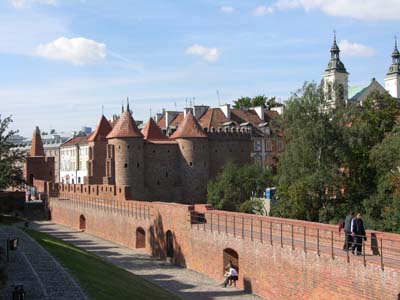
Ramparts of the “old
city”
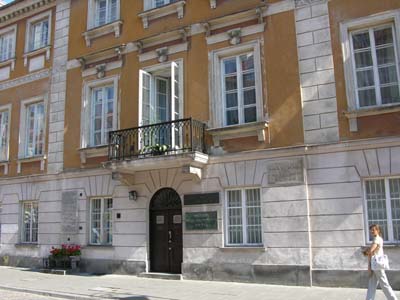
The native house of Marie
Curia
born Maria
Sklodowska
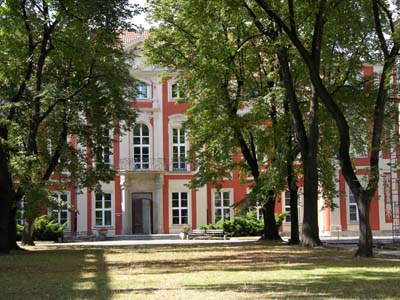
The Czapski
palace
Chopin lived there until
1830
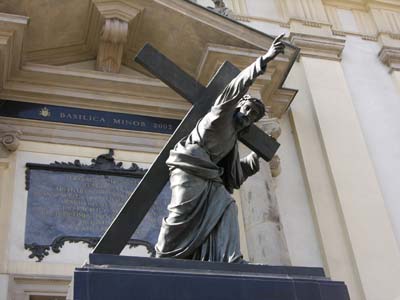
Church of the Holy
Cross
The burial urn of the Chopin's heart rests there
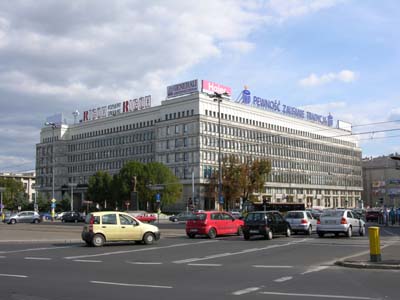
The previous headquarter of the central
Committee of the Communist Party
called by the Varsovians the “White House”
It is the headquarter of the Stock Market now!

The palace of Culture and
Science
It houses the headquarter of
Western companies now,
and the largest
casino of the city!
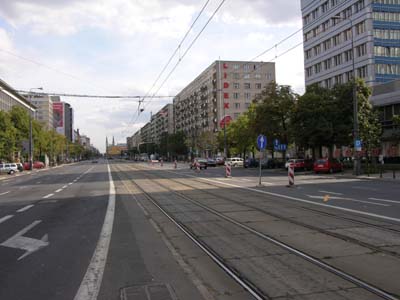
Marszalkowska
avenue
“socialist realism” style
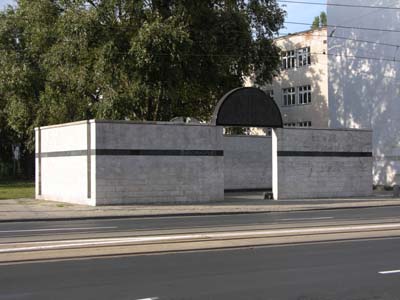
Umschlagplatz
the place of
loading of the trains to the death camps of the Jews
marble monument in wagon shape
For tourist in hurry, Warsaw
lacks charm and romanticism. But after walking into its many parks on
sunny Sunday at the beginning of September, I discovered that
the Varsovians have also an art of living other than that to attend Saturdays
in shopping centres set up by the Western European groups.
This same Sunday, I visited the monument of the insurrection of Warsaw
and I entered the Garnizonowy church at the beginning of the religious office.
I was amazed to see the Polish flag and standards marched in front of the
Master altar. The full church was with half filled of soldiers in uniform.
More than all other cities, Warsaw was the theatre of
the cruelty of the Nazis who dearly made pay the insurrection of the
summer 1944. Beforehand the ghetto of Warsaw was completely destroyed in
spring 1943.